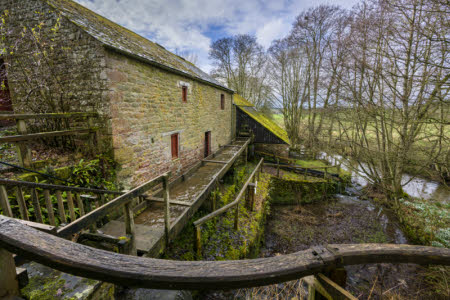So What is Hadrian’s Wall?
The Roman Emperor Hadrian, while on a visit to Britain in AD122, ordered a defensive wall to be built against the so-called ‘Barbarians’ to the north. Over the next six years, professional soldiers, or legionaries, built a wall about 15ft high and 80 Roman miles long (73 modern miles) from Wallsend in the east to Bowness-on-Solway in the west. Once constructed, Hadrian’s Wall marked the remote north-west frontier of one of the largest and most enduring empires the world has ever seen.
Discovering the Wall Today
Substantial sections of the wall and its associated infrastructure can still be seen today, including forts, milecastles, turrets, towers, bridges and even some small towns. All of these structures form part of a transnational World Heritage Site known as ‘Frontiers of the Roman Empire’.
Fascinating Archeological Sites to Explore
West of Walton in Cumbria, little can be seen of the wall on the ground other than the occasional earthwork. To the east, however, a string of fascinating sites lead practically all the way to the North Sea coast. These include turrets at Banks, the fort at Birdoswald, where you’ll also find the longest continuous stretch of the wall still in existence, and the remains of the Roman bridge over the River Irthing at Willowford. And, if you thought these attractions were impressive, just wait until you cross the county border into Northumberland… Here, Hadrian’s Wall follows the Great Whin Sill, a line of volcanic rock that forms a breathtaking, roller-coaster ridge snaking through this sparsely populated region. These iconic, much photographed sections of the wall, including Steel Rigg and Sycamore Gap, are famous throughout the world.
Key Attractions Along the Hadrian’s Wall
Some of the key attractions along this stretch of the wall include Housesteads Fort, Chesters Fort, the Roman town at Corbridge and the settlement and fort at Vindolanda. The latter predates Hadrian’s Wall and was built to guard the Stanegate road linking Carlisle and Corbridge. The museum here houses artefacts discovered at the site since archaeologists first started work in the 1930s. The most awesome finds on view are the Vindolanda wooden writing tablets, which are among the oldest handwritten documents ever found in Britain. One of the tablets is an invitation to a birthday party; another refers patronisingly to the natives as ‘Brittunculi’, which roughly translates as ‘little Britons’.
Beyond Hadrian’s Wall
Although Hadrian’s Wall itself ends at Bowness-on-Solway, the Romans’ frontier defences continued down the coast, and the earthwork remains of several forts are still evident today. Artefacts unearthed from the fort of Alauna, near Maryport, can be seen at the town’s Senhouse Roman Museum which contains the largest display of Roman military altar stones in the UK. Further south, at Ravenglass, all that remains of the Roman port of Glannoventa is its old bath-house, which is one of the tallest surviving Roman constructions in northern England.
The Hadrian’s Wall Path National Trail
Since 2003, the line of Hadrian’s Wall has been mirrored by a long-distance walking route: the Hadrian’s Wall Path National Trail. Like the wall itself, it starts in Bowness-on-Solway and ends at Wallsend, close to the mouth of the River Tyne, covering 84 miles in total. Another National Trail, the Pennine Way, also follows Hadrian’s Wall for about 10 miles – from Greenhead to Housesteads Fort.





